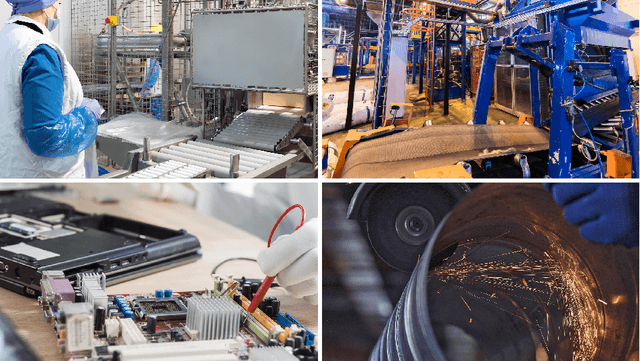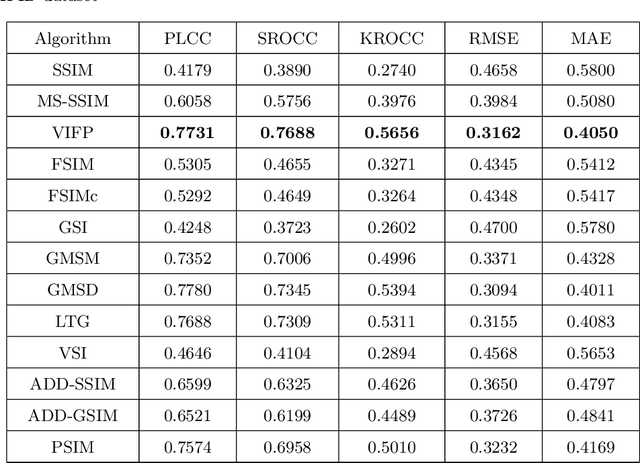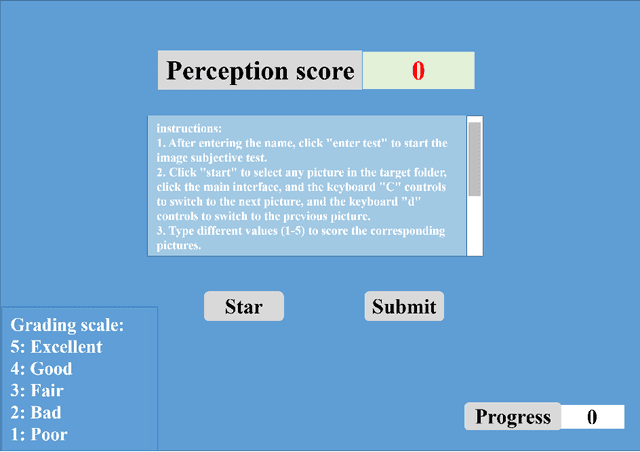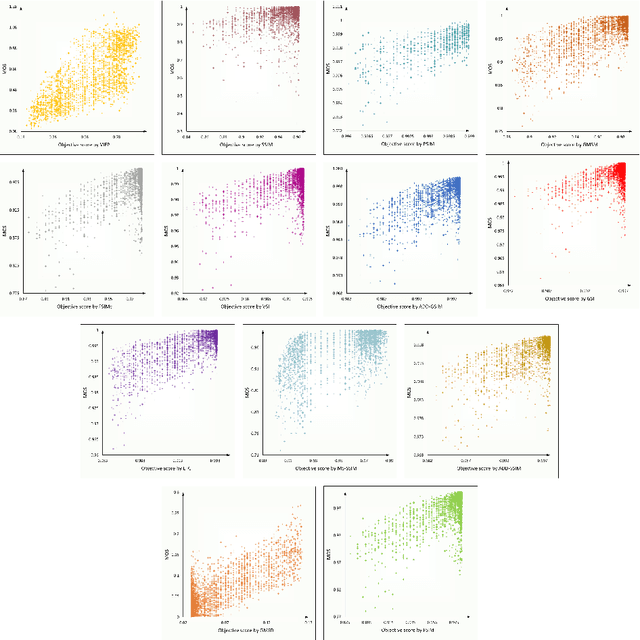Xuanchao Ma
A New Image Quality Database for Multiple Industrial Processes
Jan 29, 2024



Abstract:Recent years have witnessed a broader range of applications of image processing technologies in multiple industrial processes, such as smoke detection, security monitoring, and workpiece inspection. Different kinds of distortion types and levels must be introduced into an image during the processes of acquisition, compression, transmission, storage, and display, which might heavily degrade the image quality and thus strongly reduce the final display effect and clarity. To verify the reliability of existing image quality assessment methods, we establish a new industrial process image database (IPID), which contains 3000 distorted images generated by applying different levels of distortion types to each of the 50 source images. We conduct the subjective test on the aforementioned 3000 images to collect their subjective quality ratings in a well-suited laboratory environment. Finally, we perform comparison experiments on IPID database to investigate the performance of some objective image quality assessment algorithms. The experimental results show that the state-of-the-art image quality assessment methods have difficulty in predicting the quality of images that contain multiple distortion types.
Ethylene Leak Detection Based on Infrared Imaging: A Benchmark
Apr 04, 2023Abstract:Ethylene leakage detection has become one of the most important research directions in the field of target detection due to the fact that ethylene leakage in the petrochemical industry is closely related to production safety and environmental pollution. Under infrared conditions, there are many factors that affect the texture characteristics of ethylene, such as ethylene concentration, background, and so on. We find that the detection criteria used in infrared imaging ethylene leakage detection research cannot fully reflect real-world production conditions, which is not conducive to evaluate the performance of current image-based target detection methods. Therefore, we create a new infrared image dataset of ethylene leakage with different concentrations and backgrounds, including 54275 images. We use the proposed dataset benchmark to evaluate seven advanced image-based target detection algorithms. Experimental results demonstrate the performance and limitations of existing algorithms, and the dataset benchmark has good versatility and effectiveness.
 Add to Chrome
Add to Chrome Add to Firefox
Add to Firefox Add to Edge
Add to Edge